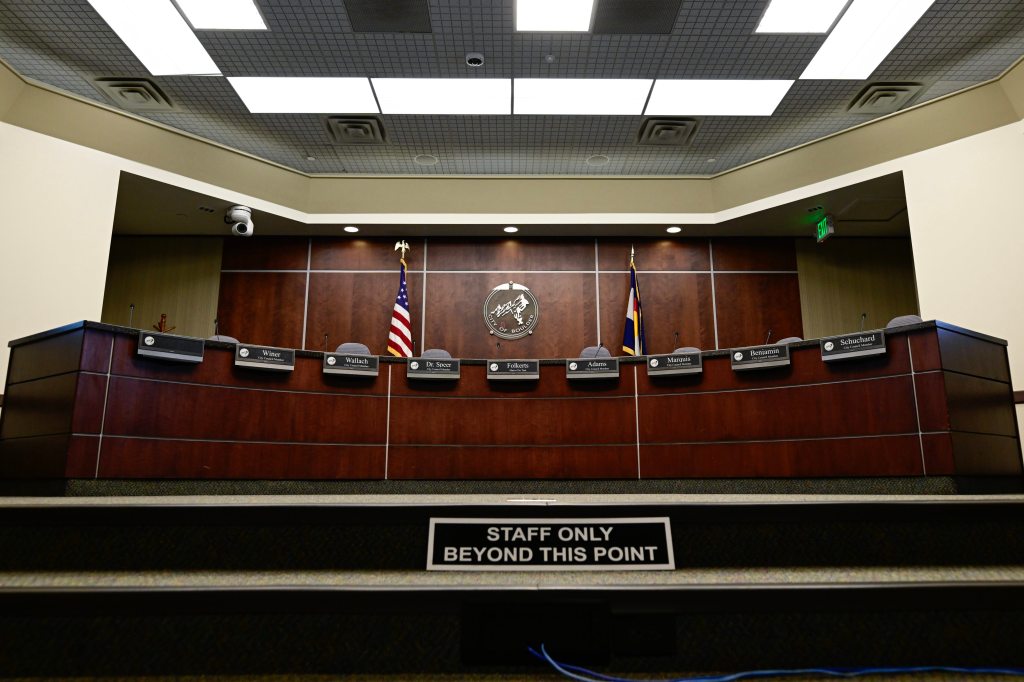Specifics are still being ironed out on an ordinance that, if approved, would drastically reshape landscaping in the city of Boulder.
The Boulder City Council pushed a public hearing back to its Dec. 18 meeting on the landscaping ordinance, which, if eventually approved, would institute major landscaping rules such as limits on when lawns can be watered and following state law on replacing non-functional natural turf with artificial turf.
The ordinance is also an extension of the council’s ongoing adoption of wildfire hardiness rules, and it includes resiliency measures that have stoked confusion and concern from council members and residents on social media websites such as Nextdoor. The council voted unanimously 8-0 to continue the public hearing down the road. Councilmember Tina Marquis was absent.
The ordinance would bar watering lawns between 10 a.m. and 6 p.m. in most instances. That time frame is when more water tends to evaporate; therefore, more water is used on the lawn.
It would also bring Boulder into alignment with an impending state law that will ban non-functional turf — turf that serves a purely aesthetic purpose.
One proposed rule is to limit the height of urban agriculture to 3 feet, which would be heartbreaking news for the big tomato plant enjoyers in your neighborhood.
The council asked staff to reconsider or include the following items in the ordinance:
• An option for maintaining tree cover for remodels and additions and, in special circumstances, new construction.
• Refined requirements so that only large projects trigger full landscape plans, and assessment of triggers for landscape requirements for properties with three or fewer dwelling units. A landscape plan is essentially the design of the outdoor area of a building or area, such as which trees will go where.
• A requirement that a planting bed needs to be only 3 feet wide to constitute as open space.
• An exemption for low-density housing from the proposed land disturbance threshold, which is defined as site grading, new landscaping, surfacing or resurfacing.
• The removal of a requirement for landscape architects on parcels over an acre.
• Adjusted language in the ordinance.
• The removal of a 3-foot height maximum on urban agriculture, such as tomato plants.
• Having the code compliance on properties with three or fewer dwelling units be based on code standards rather than an existing landscape plan.
• The removal of deadheading requirements, which is when someone removes dead flower heads to encourage blooming.
• More flexibility for acceptable rock mulch and weed barriers.
News of the possible rule changes sparked concern and outrage on Nextdoor and other platforms, prompting community members to email the council expressing their concerns.
Council members and city staffers said some of those concerns were based on misinformation, but they did not elaborate on which ones in the meeting.
“Try to be a little less prescriptive,” Councilmember Mark Wallach said to city staffers on Thursday. “What is making people crazy about this proposal is that it takes almost all of their discretion on so many matters. I would suggest that not every best practice gives us the kinds of results that we should be worrying about. There’s a difference between prescribing junipers and trying to determine what everybody has to use for mulch.”

